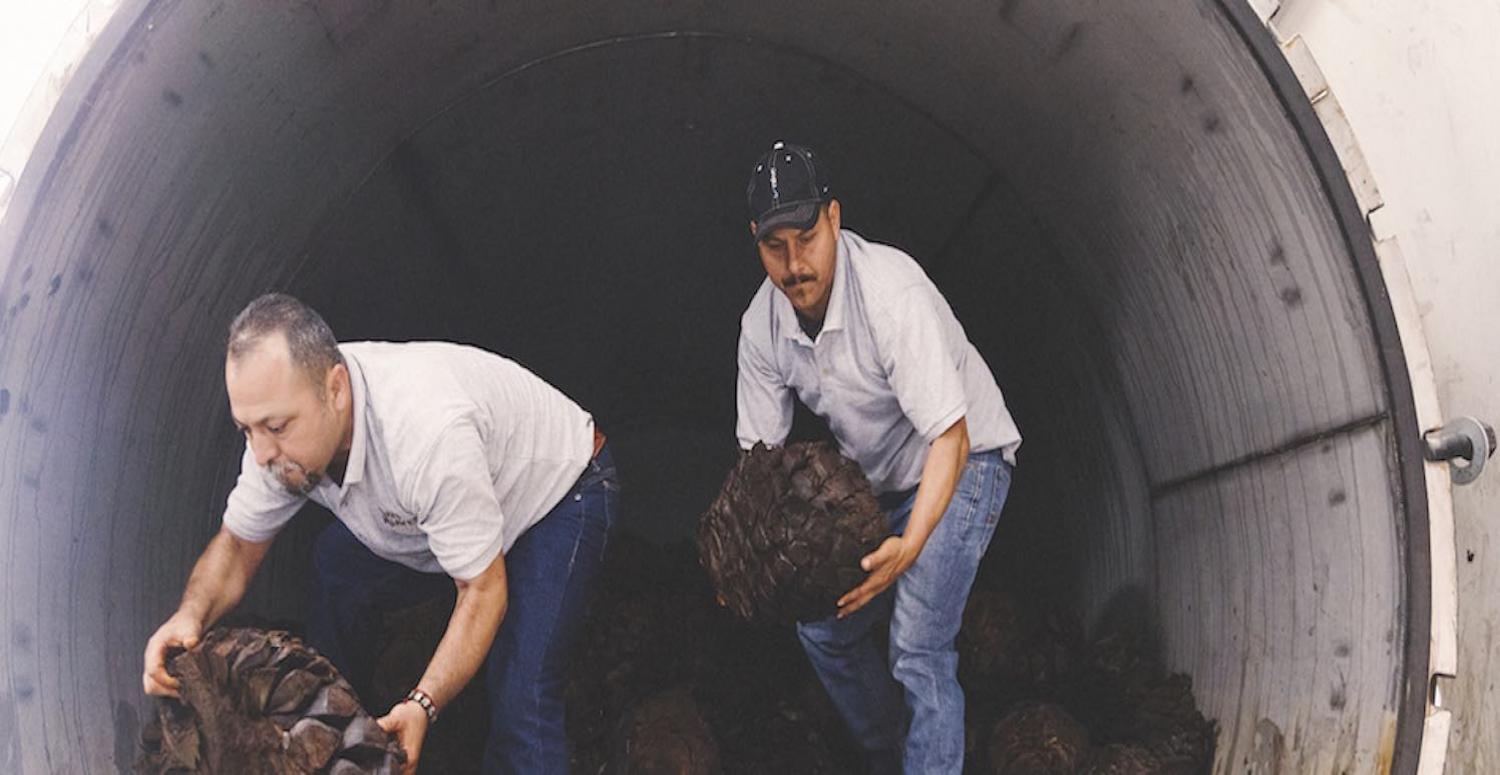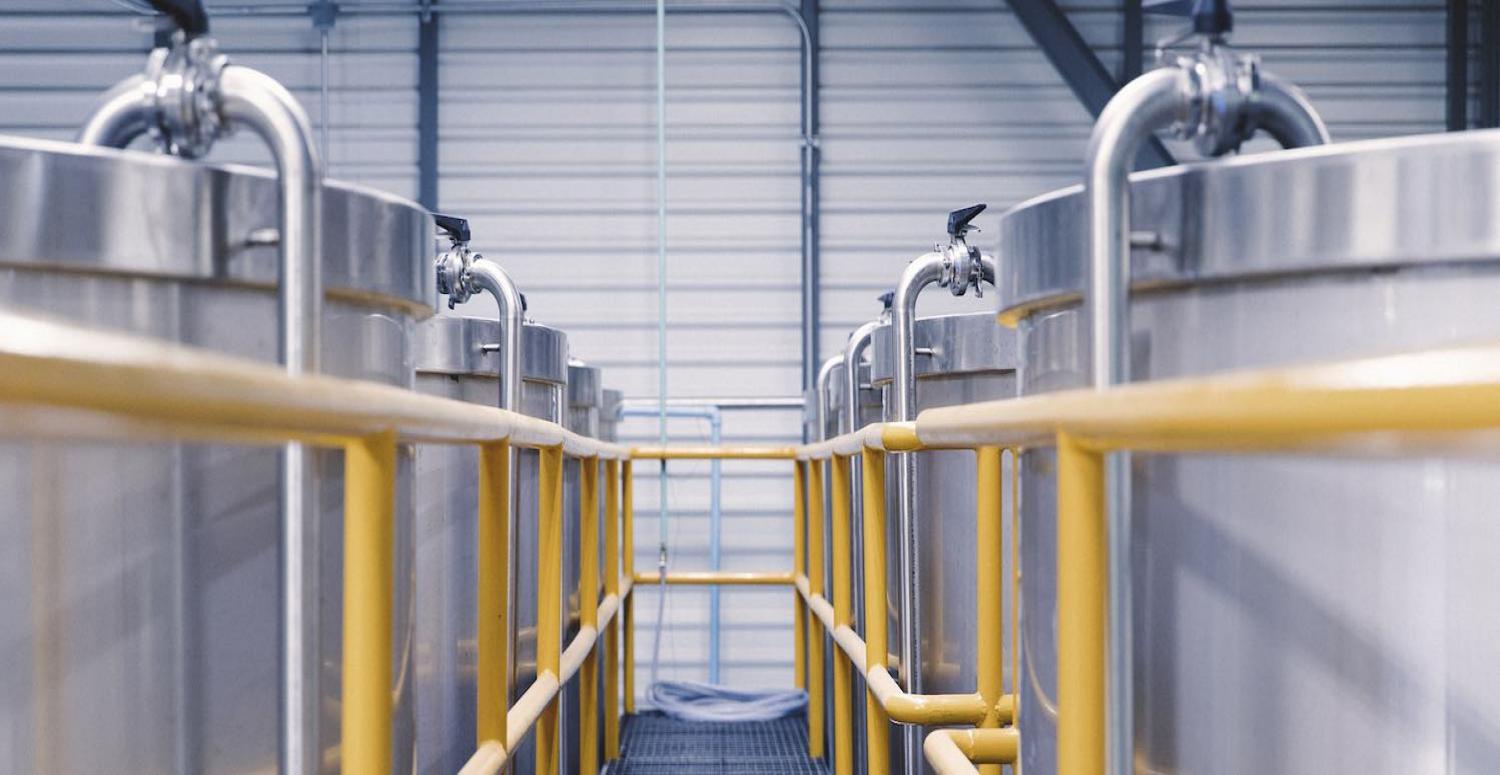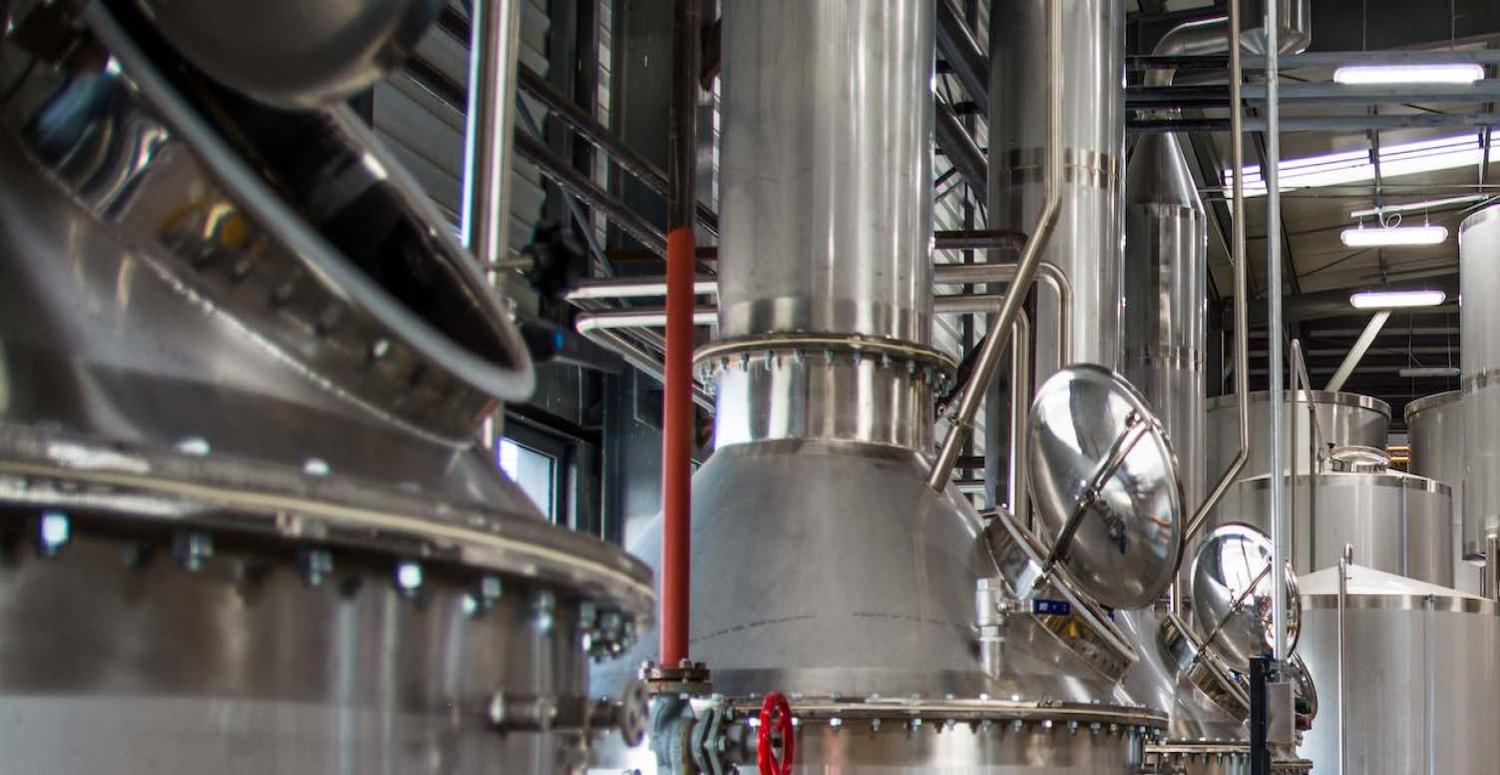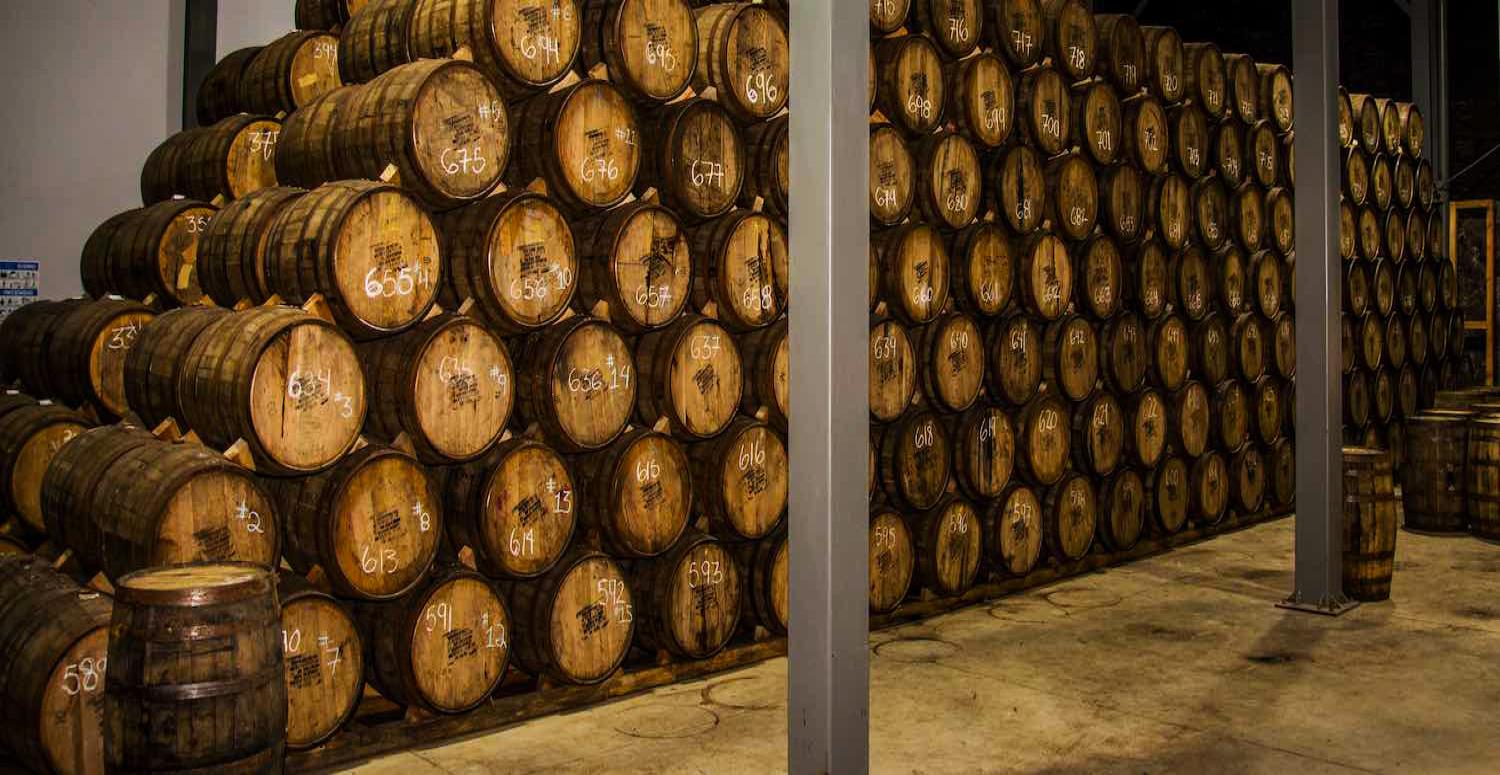Making Tequila: From Agave to Margarita
 Cooking and Crushing
Cooking and Crushing Ever wonder how long it takes blue agave to mature? 6-8 years. Talk about taking it easy. Anyhow, once the agave is harvested, we slow roast them in an oven to convert the starches to sugars, caramelizing the sugars in each plant. We cook carefully—and very slowly—to avoid burning the agave, which causes a bitter taste (which nobody wants). Finally, the sugars are removed from the cooked agave using an industry-standard, four-stage roller mill. Got it? That may have been more info than you wanted but hey, now you know." style="display:block;" />
Cooking and Crushing
Ever wonder how long it takes blue agave to mature? 6-8 years. Talk about taking it easy. Anyhow, once the agave is harvested, we slow roast them in an oven to convert the starches to sugars, caramelizing the sugars in each plant. We cook carefully—and very slowly—to avoid burning the agave, which causes a bitter taste (which nobody wants). Finally, the sugars are removed from the cooked agave using an industry-standard, four-stage roller mill. Got it? That may have been more info than you wanted but hey, now you know.
 Fermenting
Fermenting Fermentation? Think of it as a fancy term that means converting sugar into alcohol. It all starts by adding yeast. By the way, the yeast we use for fermentation comes from the same fields our agave grow in. This particular strain of yeast—our little secret—is ideal for our tequila and helps us keep our flavors consistent. The whole process takes place in large, shallow fermentation tanks, which activate the yeast and really get things going. Already dreaming of a Tres Agave margarita? Can’t blame you." style="display:block;" />
Fermenting
Fermentation? Think of it as a fancy term that means converting sugar into alcohol. It all starts by adding yeast. By the way, the yeast we use for fermentation comes from the same fields our agave grow in. This particular strain of yeast—our little secret—is ideal for our tequila and helps us keep our flavors consistent. The whole process takes place in large, shallow fermentation tanks, which activate the yeast and really get things going. Already dreaming of a Tres Agave margarita? Can’t blame you.
 Distilling Okay, what’s next?
Distilling Okay, what’s next? The fermented sugars are filtered and distilled twice in small copper-lined pot stills. After each round of distillation, unwanted “heads” and “tails” of the distillation are removed (only the best stuff moves forward). We distill twice—no more, no less. Once to get to between 21-25% alcohol. And the second time to reach 53-55% alcohol, the percentage tequila is distilled to. Some people ask why we don’t distill more. It’s simple. With tequila, the more you distill, the more flavor you remove. As tequila brands go, that’s just not our bag." style="display:block;" />
Distilling Okay, what’s next?
The fermented sugars are filtered and distilled twice in small copper-lined pot stills. After each round of distillation, unwanted “heads” and “tails” of the distillation are removed (only the best stuff moves forward). We distill twice—no more, no less. Once to get to between 21-25% alcohol. And the second time to reach 53-55% alcohol, the percentage tequila is distilled to. Some people ask why we don’t distill more. It’s simple. With tequila, the more you distill, the more flavor you remove. As tequila brands go, that’s just not our bag.
 Aging
Aging This is where things get interesting…in a chill, very long nap kind of way. We age our reposado an average of 8 months in a combination of Jack Daniels whiskey and Four Roses bourbon barrels. This means the reposado takes on some of the flavors not only of the wood but also the whiskey that has seeped into it. Our añejo is aged in the same barrels, but for about twice as long. This explains why our añejo is darker in color than our reposado. What about our blanco, you ask? Although blanco tequila can be aged for up to two months in wood, we don’t age ours. Why? Because we’d rather the pure, untouched agave flavor shines through. Congrats. You now know exactly how we make Tres Agaves. Now, let’s get some tequila drinks going!" style="display:block;" />
Aging
This is where things get interesting…in a chill, very long nap kind of way. We age our reposado an average of 8 months in a combination of Jack Daniels whiskey and Four Roses bourbon barrels. This means the reposado takes on some of the flavors not only of the wood but also the whiskey that has seeped into it. Our añejo is aged in the same barrels, but for about twice as long. This explains why our añejo is darker in color than our reposado. What about our blanco, you ask? Although blanco tequila can be aged for up to two months in wood, we don’t age ours. Why? Because we’d rather the pure, untouched agave flavor shines through. Congrats. You now know exactly how we make Tres Agaves. Now, let’s get some tequila drinks going!
